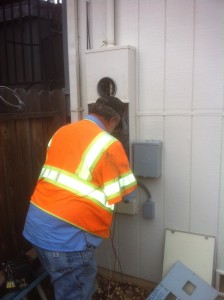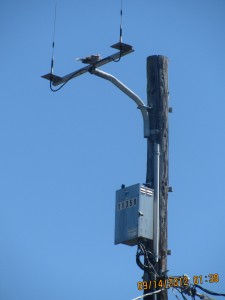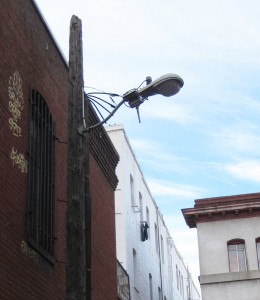Matt Beckett is a fire captain who lives in Cameron Park, CA. He sent the following account of serious electrical problems that occurred after Smart Meters were installed on his house:
“My family moved into a 1982 built house approximately nine years ago and remodeled almost everything (including ALL electrical fixtures: lights, fans, switches, sockets, etc). Our home had what I believe to be it’s original analog meter at the panel. Two years ago PG&E replaced that meter with a “Smart Meter”. Immediately following we noticed power surges in the form of our refrigerator motor intermittently speeding up simultaneously with our lights becoming brighter. As a seventeen year veteran and current Fire Captain this caused me to become very concerned. We notified PG&E and called a licensed electrician to come out and assess. Both arrived at our house within one hour. The electrician checked “our side” and PG&E theirs. Nothing was found to be wrong or faulty, but PG&E decided to change out the connections at the power pole just in case. He also pulled the smart meter and replaced it with an analog. Two years have come and gone without any electrical problems. However, on 11/5/12 our analog was replaced with another smart meter. Within one week of this we noticed power surges once again in the form of lights becoming brighter, refrigerator motor becoming louder, motion light activating by itself in no wind conditions, and while vacuuming the motor increasing speed much like the refrigerator. This culminated on 11/25/12 with my wife noticing a plastic like burning smell coming from our office. Upon further inspection we noticed our computer, phone, and shredder were not working. They were plugged into a Belkin brand surge protector that fortunately did it’s job. This caused the carpet to become hot and melted underneath in a dime sized spot and burned up (inside) the surge protector. Immediately, we called PG&E and another electrician as in the past. Both were at our house within an hour and the same result was found. “Our side” checked out fine and PG&E did not notice anything wrong or faulty. The connections at our roof top power drop were changed by PG&E just in case (even though he thought they were fine). However, the smart meter was replaced with another smart meter. Later that evening our family room TV and components were working fine. However, the next morning they had no power. When I inspected the surge protector that they were plugged into, the same condition was found as in our office.”

Matt spent four hours on the phone with PG&E, dealing with this problem and notifying them of his concerns. He demanded a rush on switching back to an analog meter. He says, “I’ve been met with multiple attitudes and accusations that I’ve not done everything I can do to make sure it’s not my house causing the problem.” According to Matt, the only time there were electrical problems was when PG&E changed from the analog to the Smart Meter.
Although PG&E tells Matt he can file a claim for the damaged surge protectors, they say he now has to pay $75 plus $10 a month to keep an analog meter on his home.
Matt’s story is similar to the East Bay fire captain who reported electrical problems and a too hot to touch Smart Meter. Arcing Meter Hazards. Evidence is piling up against Smart Meter installations connected to burnt out appliances, fires and explosions.
Sandi Maurer, director of the EMF Safety Network has been compiling Smart Meter related fires stories since 2010. She says, “It is unthinkable that PG&E, other utilities, and regulators in California have neither publicly admitted to, nor squarely addressed this serious safety hazard related to Smart Meter installations. They are failing their statutory obligation to ensure safe and reliable utility service. ”





